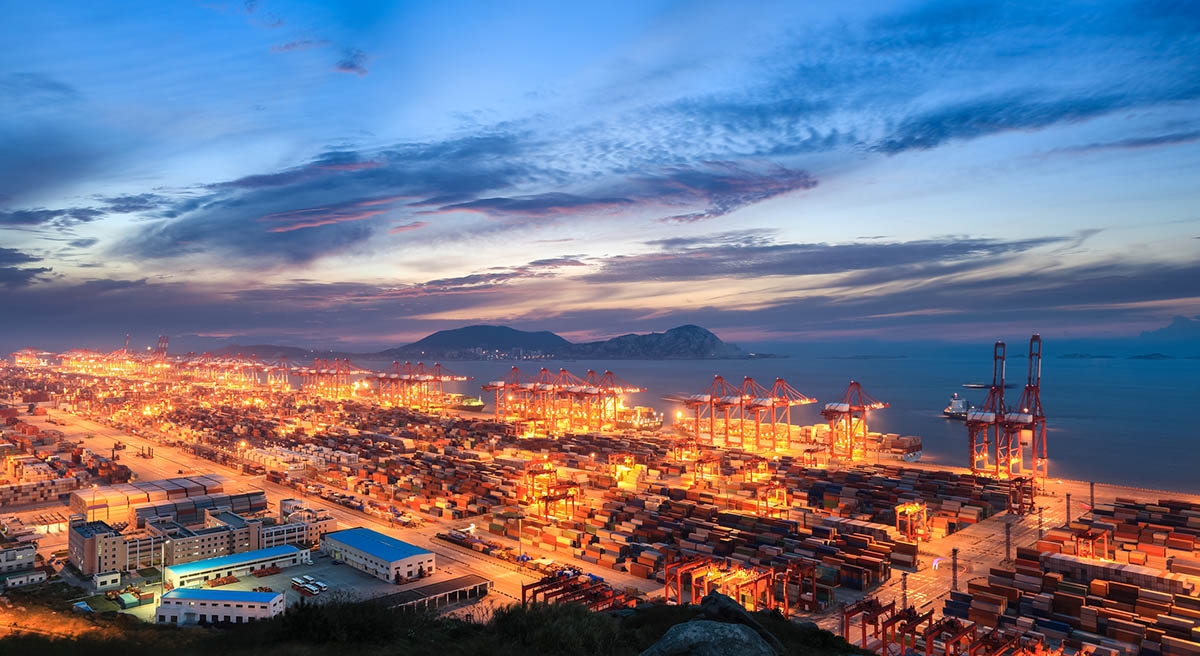
China’s Economic Development Will Inject New Vitality into Global Economic Recovery
ABOVE: Shanghai's Yangshan deep-water port at nightfall. (PHOTO: Chuyu, iStock)
By Cong Peiwu, Chinese Ambassador to Canada
Those who are familiar with China might know that the Shanghai Port is one of the largest ports worldwide, with an annual container throughput of over 47 million Twenty-foot Equivalent Units (TEUs), ranking first for 12 consecutive years in the world and bearing the heavy responsibility of “transit hub” in the global logistics chain. Since the outbreak of the new wave of COVID-19 pandemic last March, the Shanghai municipal government has coordinated and sent over 20,000 port workers for operations in the lockdown area of the Port for nearly two months. Process optimization of Bill of Lading (B/L) and Switch B/L, pressure sharing of land transport by railways and waterways, electronic passes and other measures were adopted to ensure smooth port operations round the clock. The port operation was not shut down even for a single day. In July, the average daily throughput of the Port of Shanghai was close to 140,000 TEUs, which has recovered to the level before this wave of pandemic. From January to July, the Port of Shanghai achieved positive growth in container throughput year-on-year, effectively ensured the stability and smoothness of global industrial and supply chains.
The story of the Shanghai Port is the epitome of China’s efforts in coordinating pandemic prevention and control with economic and social development. In the first half of the year, in the face of the complex evolution of the global and regional situation, the resurgence of sporadic COVID-19 cases and other unexpected factors, China responded vigorously and achieved a stable rebound in the national economy, with a year-on-year Gross Domestic Product (GDP) growth of 2.5 percent. From January to August, the added value of industries above designated size increased by 3.6 percent, the actual amount of foreign capital used surged by 16.4 percent, the total value of imports and exports went up by 10.1 percent, and 8.98 million new jobs were added. It is worth mentioning that China’s Consumer Price Index (CPI) only rose by 1.9 percent year-on-year, which created favourable conditions for a steady economy and people’s livelihood improvement.
China’s economy still possesses great growth potential. In the first half of the year, China’s economic aggregate reached 56 trillion yuan, with the total retail sales of consumer goods exceeding 21 trillion yuan. China will continue to adhere to seeking progress while maintaining stability, properly implement fiscal and monetary policies, and actively expand demand. We will maintain reasonable and adequate liquidity, promote imports and exports, expand imports, and introduce technology and foreign capital to consolidate the economic upturn. The offline consumption scene will gradually recover with the improvement of the epidemic prevention and control situation. Coupling with the efforts of the consumption promotion policy, consumption is expected to continue to recover. We believe that China’s economic development will reinvigorate the global economic recovery.
In the near future, the Communist Party of China will convene its 20th National Congress. It will be an important meeting to be held at a critical time as China embarks on a new journey toward its second centenary goal of building a modern socialist country in all respects. China will continue to follow the Chinese path to modernization to achieve the rejuvenation of the Chinese nation, and to promote the building of a community with a shared future for mankind. By doing so, China will create new opportunities for the world with new advances in China’s development and contribute our vision and strength to world peace and development and human progress.









